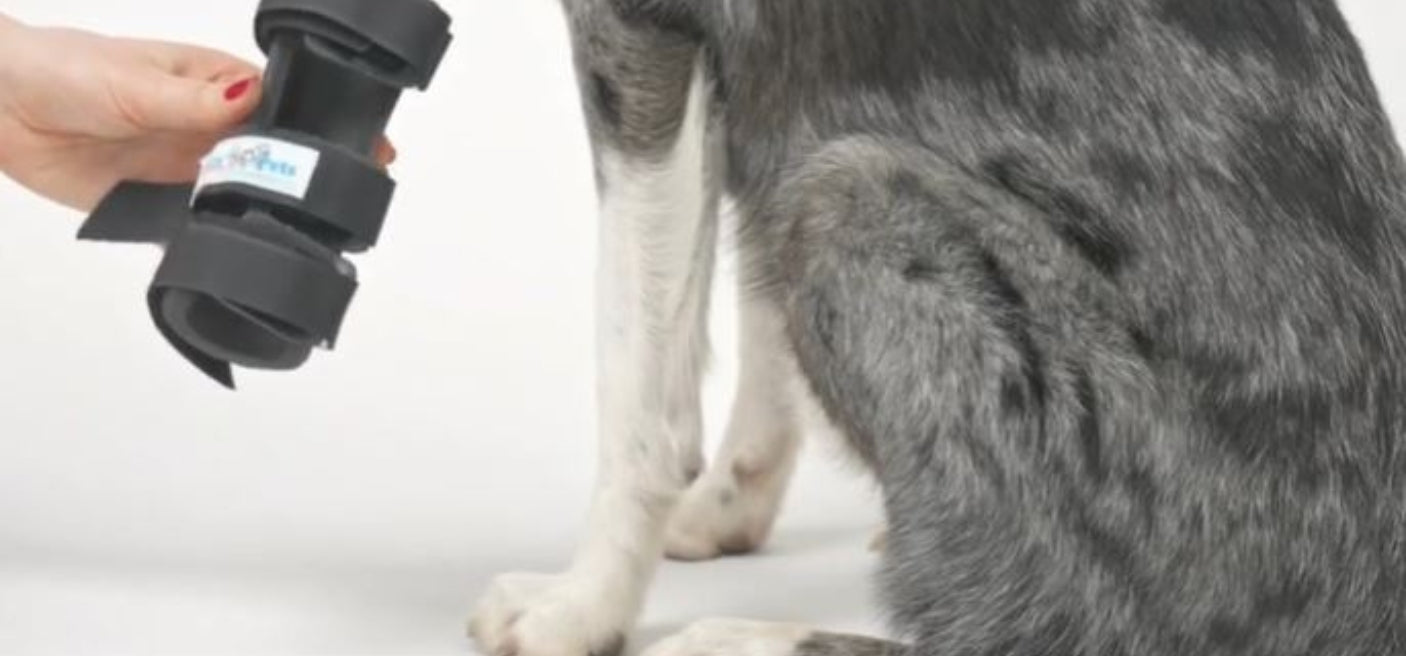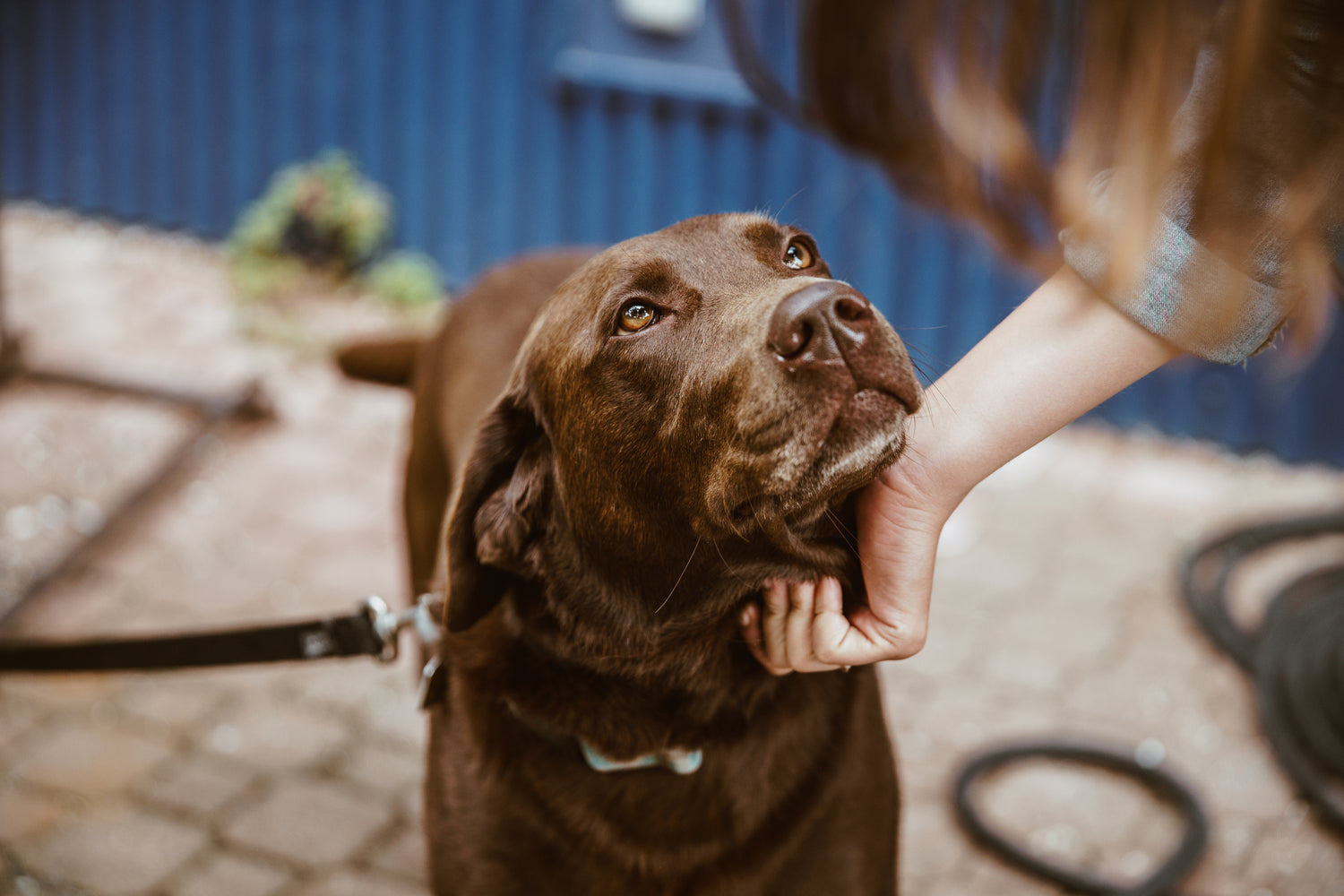What is a Dog Carpal Hyperextension Injury?
A hyperextension injury is severe damage of the ligaments that supports the wrist (or carpus) of the forelimb. On the back of the carpus, the palmar fibrocartilage supports the joint and prevents it from overextending. When the fibrocartilage is damaged, the carpus is no longer held in flexion, and this causes the paw to sink down to the ground during weight-bearing. Carpal hyperextension injuries are also called carpal luxations or subluxations. See the video below for an example of carpal hyperextension.
Which dogs get Carpal Hyperextension Injuries?
Dogs of any age, breed, or gender can suffer a carpal hyperextension injury, but it most commonly occurs in performance and agility animals, and active large breed dogs. It can also occur in smaller breeds, as well as cats.
What are the Signs of a Carpal Hyperextension Injury?
Initially, a dog with a carpal hyperextension injury will present with a non-weight bearing lameness. They will often begin using the leg again about a week later, but will be lame and will stand is what is called a plantigrade stance. As a result of the overextension and lack of support of the carpus, the paw sinks down to the ground, which looks similar to the way a rabbit sits on its hind feet.The joint is often swollen and painful.
How is a Carpal Hyperextension Injury Diagnosed?
Your veterinarian can diagnose a carpal hyperextension injury by taking a thorough history and physical exam. Upon palpation, instability will be present, and the carpus can be manipulated into greater extension than normal. The veterinarian will also take radiographs to identify the exact location of the instability of the carpus.
Why did my Dog get a Carpal Hyperextension Injury?
Carpal hyperextension injuries usually occur as a result of jumping or falling from a high surface, and are usually due to a single isolated traumatic event. In some cases, it can be due to repeated injury to the area, such as from jumping off elevated surfaces or out of a vehicle. Agility and performance dogs are prone to such injuries. If there is no history of injury and hyperextension has developed slowly, immune- mediated joint disease or degenerative conditions of the ligaments may be the cause.
How is a Carpal Hyperextension in dogs Injury Treated?
The carpus is composed of three separate joints. Therefore, treatment depends on which and how many of those joints have been compromised. If all the joints are broken down, or the just the top joint, surgery must be performed to fuse the entire carpal joint. A partial fusion may be recommended if only the last two joints are compromised. Fusion of the joints is called arthrodesis. First, all cartilage on the bones of the joint is removed, and a bone graft that has been collected from the patients humerus is packed into the joint spaces. The bones are then stabilised by plates and screws. A full arthrodesis will remove all movement within the carpus, whereas a partial arthrodesis retains about 50 to 75% of normal range of motion of the carpus. After surgery, a cast or splint is applied to the limb to support the repair for about 4-6 weeks. In most cases, splinting the carpus alone is not beneficial, because the scar tissue that forms as the injury heals is not strong enough to support the amount of stress and force that is placed on the carpus with normal activity.
Can a Carpal Hyperextension Injury be Prevented?
The best way to prevent a carpal hyperextension injury is by preventing the dog from jumping from high surfaces. Athletic dogs should be properly conditioned. Weight management is important as well. We would also recommend for active dogs and agility dogs that they wear a protective sports wrap to protect the joint during exercise.
What is the Prognosis for my Dog with a Carpal Hyperextension Injury?
Surgical arthrodesis will relieve the dog's pain once the bones have fused together. A partial arthrodesis commonly will allow your pet to have normal function of the limb with good range of motion of the carpus. A full arthrodesis of the carpus typically results in good function of the limb; however, a gait abnormality is expected, since the carpus will not have any movement. In general, about 90 to 95% of the patients will respond well to the surgery. However, full recovery with just medical management, especially in large breed dogs is guarded. Dog that are receiving from surgery or are under conservative management can wear a Carpo Flex X wrap which offers moderate to strong support to the leg.


Leave a comment